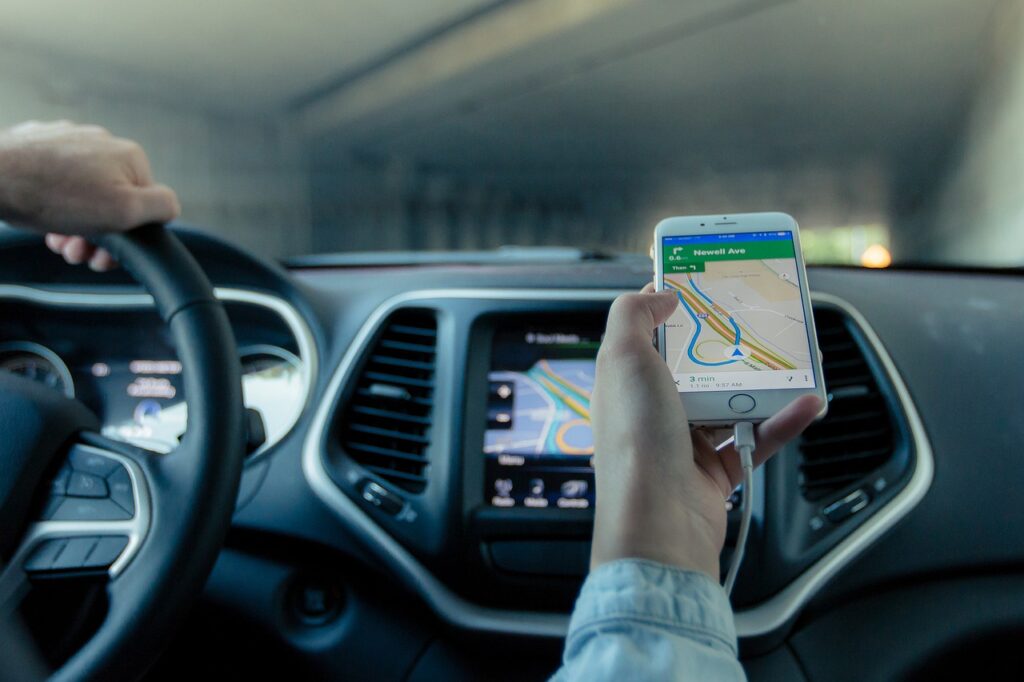As technology permeates every aspect of our lives, it has become an influential force in the way we learn – and the field of driving education is no exception. With a swathe of new tools, applications, and approaches to learning, driving instruction is evolving to meet the demands of the digital age. Embracing these advancements provides tremendous opportunities for enhancing learning experiences and enriching driving education overall.
121 Driver Training, a TfNSW and ASQA-approved Registered Training Organisation, recognises the importance of integrating technology into our Driving Instructor Course. We endeavour to stay abreast of the latest innovations and adapt our course materials and teaching methods to provide comprehensive, contemporary, and effective instruction. Our commitment to embracing technology ensures both our driving instructors and learners will be equipped with the most relevant, up-to-date knowledge and skills.
In this blog post, we will explore the ways in which technology is shaping the learning experience for drivers and driving instructors, examining some of the innovative tools and approaches 121 Driver Training has adopted within its renowned Driving Instructor Course. By understanding the role and potential of technology in driving education, we can ensure not only the best possible outcomes for our learner drivers but also heightened road safety across Australia.
Technology’s Impact on Learner Drivers: Insights from 121 Driver Training’s Courses
Building on the introduction, we will discuss some of the innovative technologies reshaping learner driver experiences and driving education, highlighting how 121 Driver Training’s comprehensive Driving Instructor Course embraces these advancements to offer cutting-edge instruction.
1. E-Learning Platforms and Online Resources
The rise of e-learning platforms and online resources has transformed the way learner drivers access information, practice, and study for their driving licence tests. This shift towards digital learning allows for unprecedented flexibility and convenience, accommodating diverse learning styles. Some key ways e-learning platforms and online resources are impacting driving education include:
– Web-Based Instructional Material: 121 Driver Training incorporates online modules within its Driving Instructor Course, offering learners easy access to comprehensive course materials and the ability to progress at their pace.
– Interactive Learning Tools: Web-based quizzes and practice tests allow learner drivers to test their understanding of key concepts and receive immediate feedback, enhancing their grasp of content.
– Streaming Video Content: Instructional videos and demonstrations make complex manoeuvres and driving techniques more accessible and engaging for learner drivers.
– Online Communities and Forums: These platforms facilitate interaction between learner drivers and instructors, encouraging sharing experiences, asking questions, and receiving guidance.
2. Smartphone Applications for Driving Education
Many driving schools and instructors, including 121 Driver Training, are leveraging the growing trend of smartphone applications in driving education. These apps provide interactive learning experiences and practical tools to enhance in-car training sessions. Some examples include:
– GPS Navigation Apps: These help familiarise learners with navigation instructions, routes planning and build confidence in using technology to manage their journeys.
– Hazard Perception Apps: Such apps allow learners to reinforce their understanding of hazard perception and practise identifying potential hazards in real-world driving scenarios.
– Theory Test Practice Apps: These resources provide learners access to practice tests and help reinforce their understanding of the road rules and regulations.
– Driver Journal Apps: Assist learners in tracking their driving progress, logging hours and reflecting on in-car lessons.
3. Vehicle Technologies Impacting Driving Education
Modern vehicle technologies play a vital role in enhancing driving safety, comfort and efficiency. As these innovations become more widespread, it’s crucial for driving instructors and learners to stay up-to-date on their usage and implications. Examples of vehicle technologies that are increasingly relevant to driving education include:
– Driver Assistance Systems: Advanced safety features such as blind-spot monitoring, adaptive cruise control, and collision warning systems are now commonplace in modern vehicles. Driving instructors need to educate learners about these technologies’ functions, benefits, and limitations to ensure they can safely and effectively utilise them.
– Telematics and Vehicle Data: Instructors can harness data from telematics systems to monitor vehicle performance during training sessions, enabling them to provide targeted feedback and address specific areas of improvement for learners.
– Electric and Autonomous Vehicles: As technology progresses, learners may increasingly encounter electric and autonomous vehicles on the road, requiring adjustments to traditional instruction methods to accommodate these advancements.
4. Virtual Reality Simulators and Driver Training
Virtual reality (VR) simulators provide an immersive and engaging learning environment, allowing driver training to take place in a controlled, risk-free setting. While not yet widely adopted, VR driving simulators are steadily gaining traction and have the potential to impact driving education in the future significantly. Some key benefits of VR simulators in driver training include:
– Realistic Driving Experiences: Virtual driving environments accurately simulate a broad range of road situations and conditions, allowing learners to gain practical experience without the risk of real-world driving.
– Tailored Scenarios: Instructors can create customised driving scenarios to target individual learner needs, focusing on specific weaknesses or challenges.
– Immediate Feedback: VR simulators can offer real-time feedback on learner performance, helping to reinforce correct behaviours and techniques.
Conclusion
The impact of technological advancements on learner drivers and driving education cannot be underestimated. By understanding and embracing these innovations, driving schools and instructors can ensure effective, engaging, and contemporary instruction is delivered to their students.
121 Driver Training’s commitment to integrating technology into its Driving Instructor Course is a testament to our dedication to providing the best possible learning experience. Through the adoption of e-learning platforms, smartphone applications, vehicle technologies, and emerging innovations such as virtual reality simulators, we strive to equip our instructors and learners with the skills and knowledge to excel in today’s increasingly technology-driven world. We aim to cultivate an ongoing commitment to road safety and skilful driving among drivers throughout Australia, now and into the future. Enrol in our driving instructor course today.




